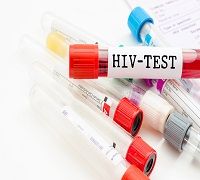Article
Male Circumcision Plus ART Reduces New HIV Infections
Author(s):
Male circumcision rates are on the decline in the United States, but combined with antiretroviral therapy (ART), it prevents new human immunodeficiency virus (HIV) infections.

Rates of male circumcision have been on the decline in the United States, according to a study in Mayo Clinic Proceedings conducted in 2014. But researchers from the Johns Hopkins Bloomberg School of Health have released new data showing circumcision, along with antiretroviral therapy (ART), significantly reduces new human immunodeficiency virus (HIV) infections in males.
“Before our study, there was no empirical data to show the effects of scaling up these two interventions in real-world settings,” lead author Xiangrong Kong, PhD, said in a news release.
The research was gathered from high-risk settings — 45 communities in rural Uganda – between 1999 and 2013. The data was sorted into three time periods: before the availability of ART and circumcision (1999 to 2004), during the availability of ART and circumcision, and during full program scale up of both strategies (2007 to 2013).
The cohort included 44,688 participants with an average age of about 25 years and about half female. From 1999 to 2013, median male circumcision rates increased from 19% to 39%, and ART therapy increased from 0% to 21% and 0% to 23% in males and females, respectively.
- Related: HIV Epidemic Continues to Persist in Gay, Bisexual Men
“The biology of these two prevention strategies has been proven, but the big question was whether these strategies could have an impact on the number of new HIV infections in communities still struggling to control the spread of the disease,” explained Kong, an associate scientist in the departments of Epidemiology and Biostatistics at the Bloomberg School.
Published in The Journal of the American Medical Association (JAMA), the results showed that there was a 39% reduction in new HIV infections in communities where more than 40% of the men were circumcised, in comparison with communities where only 10% or less of men were circumcised.
In addition, communities where 20% or more of women with HIV were on ART, male infection rates were reduced by 23% when compared to communities where less women were on treatment. However, there was no reduction in women with new HIV infections. This could change with the increase of ART in men, Kong said.
These findings suggest that high-risk populations could benefit from scaling up both male circumcision and ART. Funding is an obvious challenge when it comes to implementing programs in general; but another is trying to convince grown men to be circumcised since it’s usually a procedure that takes place in infancy.
The World Health Organization (WHO) set a target for 80% of sub-Saharan African men be circumcised and 10 million underwent the procedure between 2007 and 2015. So progress is being made and if these recent study results are any indication, the circumcisions will make a big impact on new HIV infection rates.
Also on MD Magazine >>> No HIV Transmission Found in Condomless Couples Using ART





